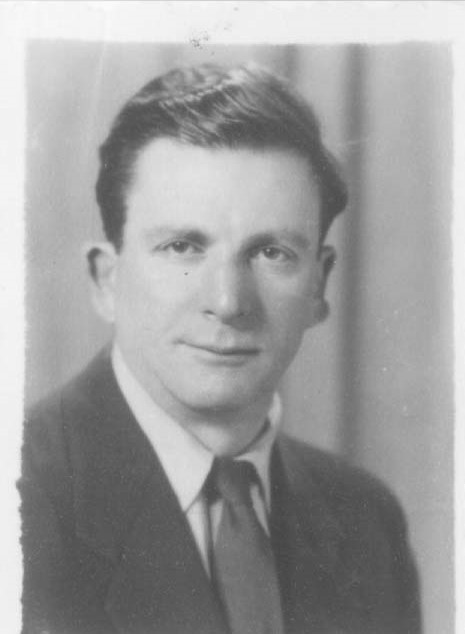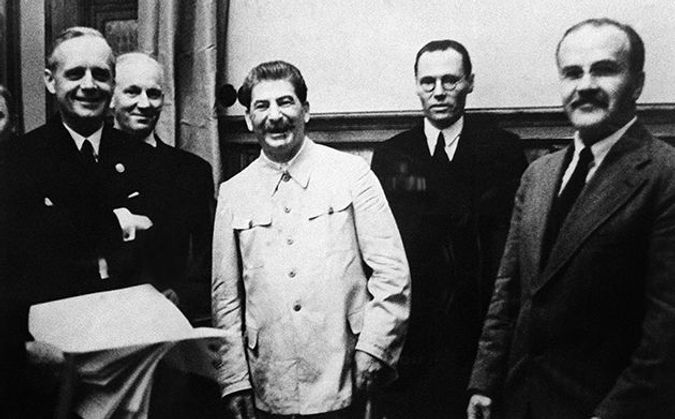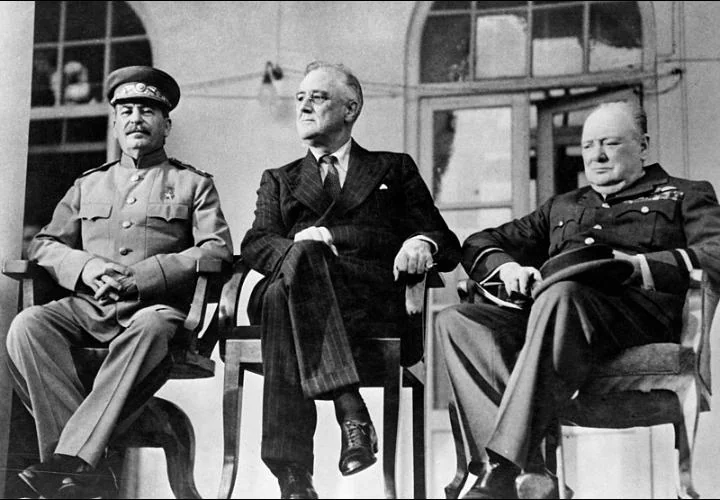Ray Goodspeed introduces an article by Ted Grant, from 1943, on the shameful end of the Communist International (1919-1943).
The full article, “The rise and fall of the Communist International”, can be read here. It first appeared in the Workers’ International News – June 1943.
On this day, 15th May 1943, the Communist International (the Third International) was finally put out of its misery and wound up by Stalin in order to placate his new wartime allies, Roosevelt and Churchill, the leaders of the USA and Britain. In truth, it was really just a formality. It had not held a congress since 1935 and had long since failed to play any role in trying to spread socialism throughout the world, and to pretend otherwise was embarrassing. So, after 24 years, it was simply dispensed with.
This anniversary gives us the opportunity to remember an article by Ted Grant (1913-2006), one of the leaders, in Britain in the 30s and 40s, of those revolutionaries who were supporters of Trotsky, and opposed to Stalinism. Ted went on to be a leading member and main theoretician of Militant. This, article from June 1943, eloquently outlines the degeneration of the Stalinist clique and of the Comintern, from its revolutionary beginnings to its pathetic and shameful end.

This also allows us to educate young people on the left about the history and true nature of the “Communist” parties. This is sadly necessary as a small layer of students and other young people have become attracted to the imagery and symbols of “Stalinist chic or kitsch” and even some of the ideas of Stalinism and his successors in the Soviet bureaucracy. Disgusted by the betrayals of Labour leaders over decades and bewildered by the antics of the myriad of ultra-left grouplets calling themselves “Trotskyists”, some have turned in desperation to the Stalinist tradition for answers – but these ideas can be shown to be worthless.
The Communist International (The Comintern) was founded back in 1919 as a direct result of the victory of the Bolshevik revolution in Russia in October (November) 1917, and also because of the betrayal of the different sections of the previous (Second) International in 1914, when each section came out in support of its own national ruling class in the pointless, imperialist slaughter of the First World War.
Co-ordinating centre of world revolution
The job of the Comintern was to be the co-ordinating centre of world revolution, building on the first workers’ revolution in the new Soviet Union, which was never intended to be a separate nation, but the core of a future federation of socialist republics in Europe and the world – The Union of Soviet Socialist Republics (USSR).
The leaders of the Bolshevik revolution, Lenin, Trotsky and the others, always knew that just one revolution in one of the most economically and socially backward countries in Europe could only lead to the building of socialism if it inspired revolutions in other, more advanced capitalist economies such as Germany or Britain that could come to its rescue and help it to become a more developed industrial power. This was simply an unquestioned truth.
From the end of WW1, heroic attempts at workers’ revolutions took place all over Europe, but were tragically unsuccessful, leaving the USSR isolated, economically ruined from years of war and civil war, and desperately under-developed.
It was in these conditions that Stalin suddenly came up with the completely novel theory of “socialism in one country”. This theory, and the opposition to it by so-called “Trotskyists” – really just consistent Marxists opposed to the crimes of Stalinism – has been widely misunderstood. Of course, the conversation goes, if the USSR was isolated and other revolutions had all failed, what choice did Stalin and his allies have but to carry on alone?!
National interests
But this misses the point. Naturally, the Soviet Union had to find ways to cling on and survive, even making temporary deals with this or that capitalist power, until another successful revolution elsewhere came to the rescue. However, the theory of “socialism in one country” turned into a nationalist idea, setting the national interests of the Soviet Union against those of other nations. And the interests of the Soviet Union more and more became those of the undemocratic elite that had seized control of the state, which they ran for their own benefit.
This caste of bureaucrats and functionaries seized power by physically eliminating the cream of the generation that led the revolution. These revolutionaries were subjected to obscene show-trials on patently absurd charges, or perished in the labour camps or were just secretly shot. All this was cheered on by Communist Parties in other countries, including in Britain, via their paper the Daily Worker (now the Morning Star).

From the late 20s onwards, under five-year plans that led to industrialisation at a frenzied pace, driven not by democratic planning but by central dictat and terror, workers were super-exploited and driven into increasing poverty. In the countryside, peasants starved in their millions during the sudden forced collectivisation of agriculture. Meanwhile, the elite got richer and more powerful, and feared the independent activity of workers as much as the capitalists of other countries did.
International workers movement sacrificed
The Communist International became equally dominated by the Stalinists. The interests of the international workers’ movement were sacrificed for the purely national interests of the Soviet state bureaucracy. The Spanish revolution was controlled and limited by Stalin and the Comintern and revolutionaries were hunted down, tortured and executed by the Soviet secret police, all to please Stalin’s allies – the bourgeois governments in western Europe.
Then came the Stalin-Hitler pact of 1939, when Poland was partitioned between the USSR and Nazi Germany. Part of the deal was the disbandment of the Polish Communist Party. Those members on the German side of the border were abandoned to the Nazi Third Reich, along with millions of Jewish people who were systematically slaughtered. Even those on the Soviet side and those who fled there from the rest of Poland were treated with suspicion and often ended up in the labour camps – the infamous Gulag. Other international communists who had gone to the USSR became victims of the Great Terror of the late 30s, unless their loyalty to Stalin was unquestionable – and some were executed even then!
The supreme irony was that when Hitler finally attacked the Soviet Union in 1941, the Communist Party, following Stalin’s order, suddenly became the biggest cheerleaders for the war effort. In Britain, under Churchill, they broke strikes and beat up pickets, and at the end of the war, called for a coalition with Churchill!
After the war, of course, the Soviet Union DID establish satellite states in eastern Europe in its own monstrous image, deformed from birth, as it were. The Soviet Army and security services crushed any independent working class activity. These lasted until the whole repressive edifice came crashing down in the late 80s and early 90s.
It is essential for each generation to learn lessons from the mistakes (and crimes!) of the past as well as the achievements.



